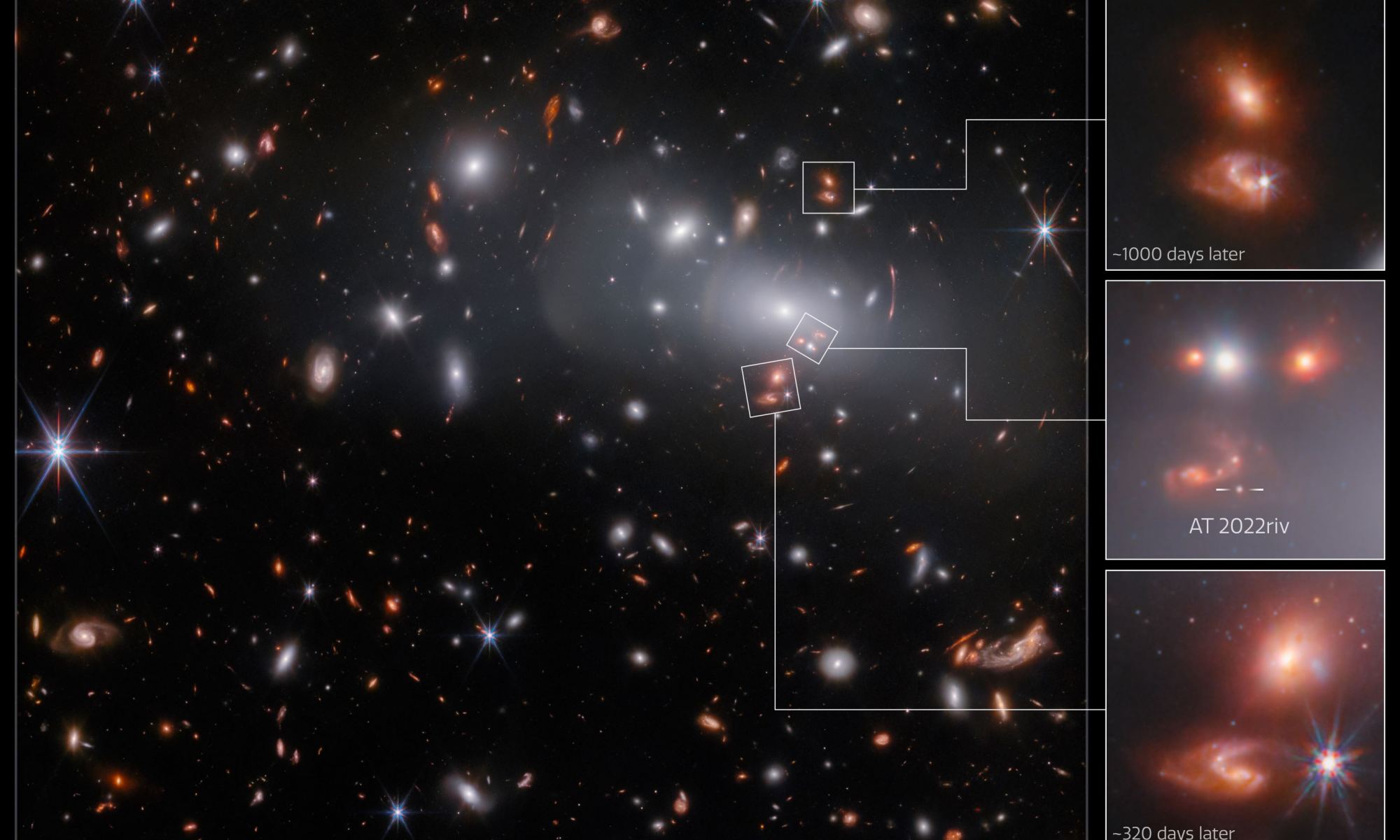The NASA/European Space Agency (ESA)/Canadian Space Agency (CSA) James Webb Space Telescope (JWST) mission continues to dazzle and amaze with every image it beams back to Earth, and a recent observation depicting not one, not two, but three images of the same galaxy has been no different, as they proudly tweeted on February 28, 2023.
But how can JWST observe three images of the same object at once? This is done thanks to a phenomenon known as gravitational lensing, which happens when light is bent or warped around a massive celestial object that emits an enormous amount of gravity, most commonly a star like our Sun, but can also happen with massive galaxies, as well.
The triple-imaged object in question is a supernova-hosting galaxy whose light is being distorted and bent by the massive galaxy cluster known as RX J2129, which is located approximately 3.2 billion light years from Earth. Astronomers have determined the three separate images are all different ages and characteristics given the varying varying distances that light had to travel in each one.
The oldest image containing the astronomical transient (aka supernova candidate), AT 2002riv, has been determined to be a Type Ia supernova and is identified by the two parallel lines on either side of it. This is followed by an image as the distant galaxy appears ~320 later, and the third image is how it appeared ~1000 days post-AT 2002riv. Both images occurring ~320 and ~1000 days after the first image show the supernova completely gone from view. Type Ia supernova are particularly helpful to astronomers as studying their luminosity can help measure the enormous astronomical distances to them.
“The almost uniform luminosity of a Type Ia supernova could also allow astronomers to understand how strongly the galaxy cluster RX J2129 is magnifying background objects, and therefore how massive the galaxy cluster is,” explains the European Space Agency. “As well as distorting the images of background objects, gravitational lenses can cause distant objects to appear much brighter than they would otherwise. If the gravitational lens magnifies something with a known brightness, such as a Type Ia supernova, then astronomers can use this to measure the ‘prescription’ of the gravitational lens.”
As stated, gravitational lensing is when the gravitational field of a massive celestial object causes background light to appear bent or warped when it comes into view, meaning the celestial object acts a sort of celestial lens so astronomers can view other objects behind it. In this case, a supernova-hosting galaxy whose light has been not only bent but split three times as its light traveled through the “lens” of RX J2129.

Gravitational lensing is one of the most historic predictions of Albert Einstein’s theory of general relativity, and was first discovered in 1979 when two quasars were observed to be in close proximity to each other, but turned out to be the same object whose light had been split in two, similar to what RX J2129 did to the distant galaxy in the recent JWST observation. While gravitational lensing is used to observe large objects like supernovae, a method known as gravitational microlensing is equally used to find exoplanets.
How many more supernovae will JWST observe, and what else will we learn about gravitational lensing in the coming years and decades? Only time will tell, and this is why we science!
As always, keep doing science & keep looking up!

